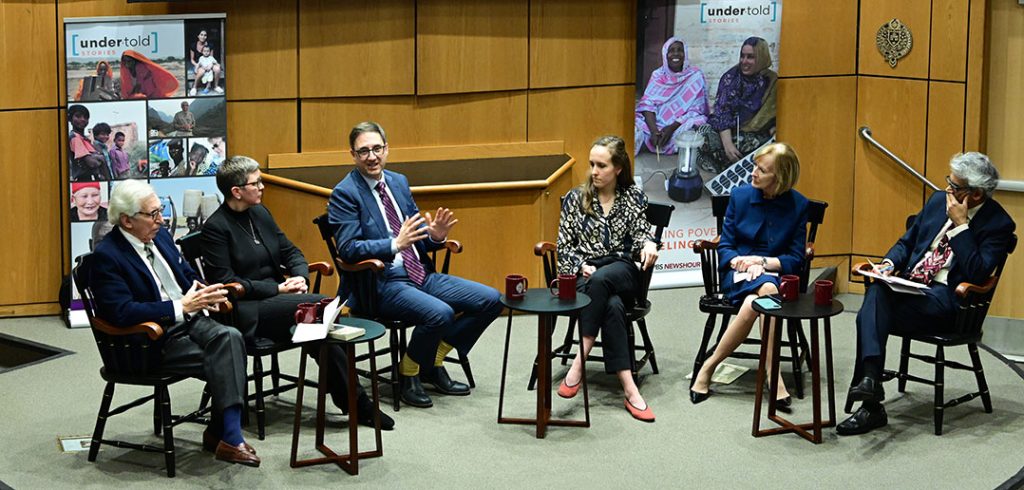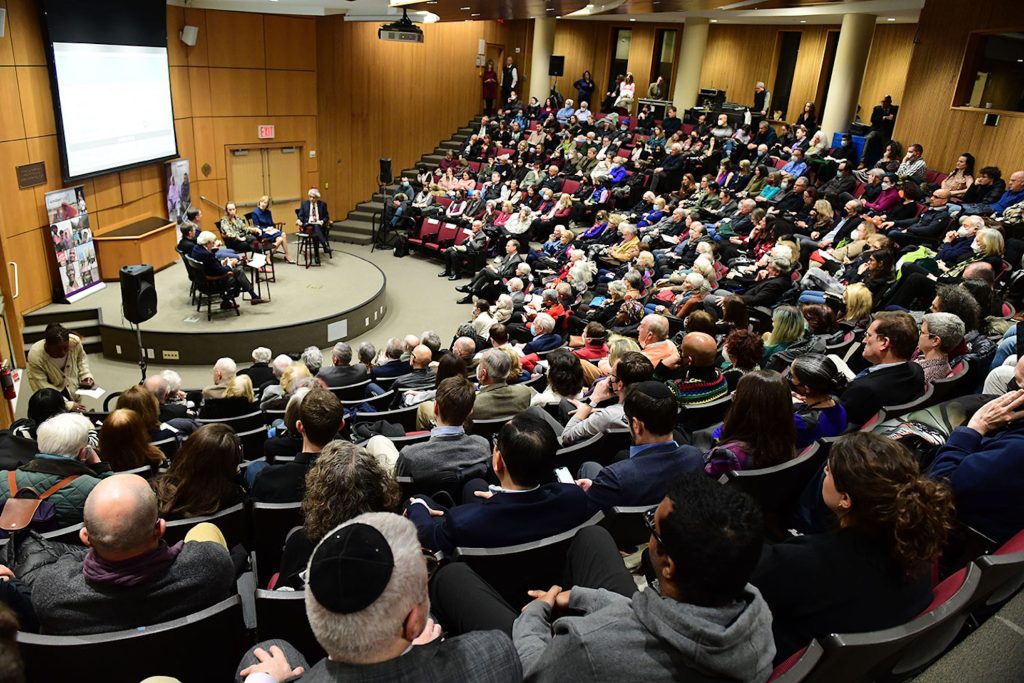This was the challenge that a panel of experts—together with one Holocaust survivor—addressed at Fordham’s Lincoln Center campus on Jan. 26.
The event, “Remembering: Talking About the Holocaust in the 21st Century,” took place on the eve of International Holocaust Remembrance Day, which commemorates the liberation of the Auschwitz concentration camp on Jan. 27, 1945.
Fred de Sam Lazaro, a correspondent for PBS NewsHour and director of the University of St. Thomas’ Under-Told Stories Project, moderated the evening, along with Peter Osnos, founder of PublicAffairs Books.
The discussion began with a screening of de Sam Lazaro’s 2022 PBS NewsHour segment on Nicky & Vera: A Quiet Hero of the Holocaust and the Children He Rescued (Norton Young Readers, 2021). Written and illustrated by Peter Sís, who was in the audience at the Jan. 26 event, it tells the story of Nicholas Winton, known as the “British Schindler,” who helped 669 children escape from Czechoslovakia just before the Nazi occupation.
One of ‘Winton’s Children’ Shares Her Story
One of those escapees, Eva Paddock, was interviewed by de Sam Lazaro at the event. She spoke just before the panel of experts addressed diminishing public awareness of the Holocaust amid a rise in disinformation and revisionism. In 1939, when she was 4, Paddock and her sister were placed by their parents on the last Kindertransport train leaving Prague and taken in by a foster family in England. Unlike the majority of “Winton’s children,” as they came to be known, Paddock was reunited with her parents in 1940.
Because she was so young, she needed people like her parents to help her fill in the gaps in her memory, she said. When they talked about their experiences, they did not dwell on the evil that drove them from their home, but on the gratitude they felt toward the British people.
She also shared the harrowing details of her father’s escape, which was made possible only because of the altruism of individuals, from an S.S. officer who looked the other way when he encountered him, to a stranger who paid for his flight from Brussels to London when he was told his Czechoslovakian money was no good with the country in enemy hands.
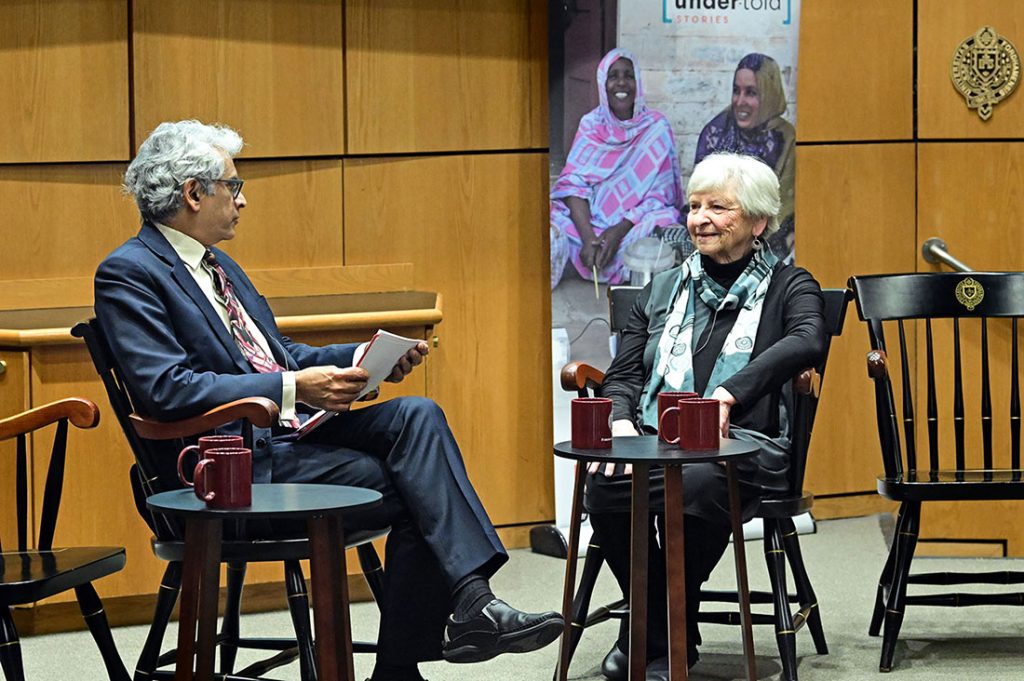
Educating Young People About the Holocaust
Holocaust education, which is mandated in schools in only 27 U.S. states, is due for a change, and her and her father’s stories should be a part of that change, Paddock said. Both stories show how even a single person has the potential to do enormous good.
“It has to come out of the history books and be made relevant to today’s generation, and I believe the way to do that is to reframe the way it’s taught,” she said.
“Certainly, it’s important to teach [people] to honor the millions lost, but I think it needs to be reframed to demonstrate the power of altruism and the power of one. Because of course, I look at Nicholas Winton, and here’s a prime example of the power of one.”
The panel that followed featured Judy Woodruff, senior correspondent, PBS NewsHour; Magda Teter, Ph.D., the Shvidler Chair in Judaic Studies at Fordham; James Loeffler, Ph.D., the Jay Berkowitz Professor of Jewish History at the University of Virginia; and Linda Kinstler, author of Come to This Court and Cry: How the Holocaust Ends (PublicAffairs, 2022).
Their wide-ranging conversation touched on everything from the war in Ukraine and the 2017 “Unite the Right” white supremacist rally at the University of Virginia to the challenges faced by U.S. news organizations when newsworthy politicians use extreme rhetoric that was once beyond the pale.
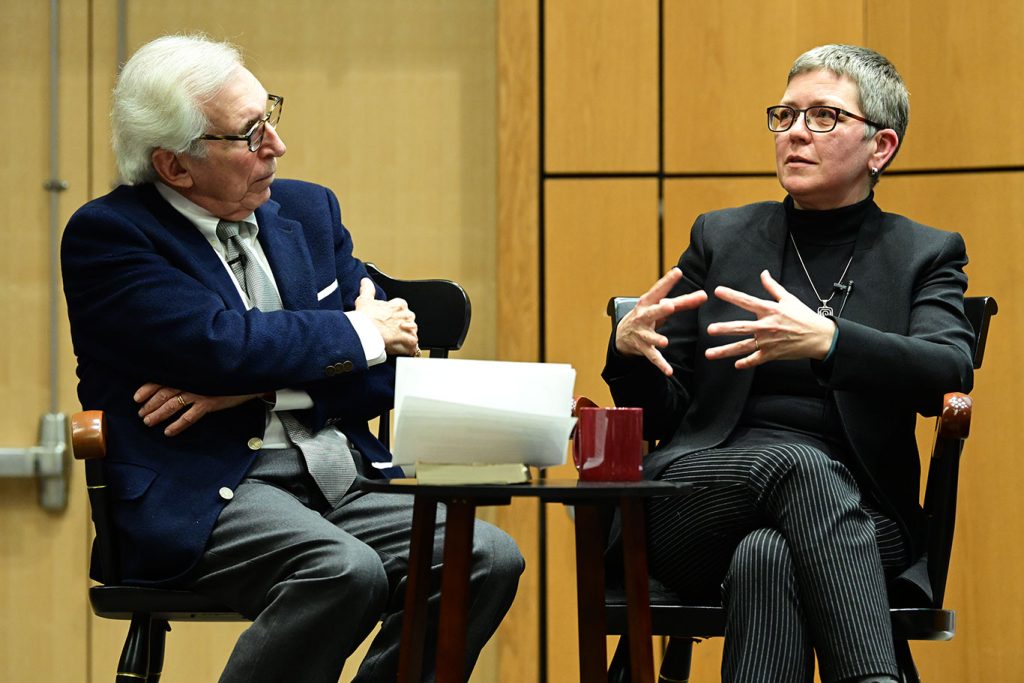
Building a Framework for Memories
Loeffler said that when it comes to sustaining the memory of the Holocaust, it helps to remember that many people are involved—each with a different memory. This partly explains why Russian president Vladimir Putin could make the preposterous statement that Russia was invading Ukraine to fight Nazis and fascism, he said.
“One of our challenges is to build a frame so we can build an ethical response that takes the memory and brings people back together to understand what it was and what it wasn’t,” he said, noting that Paddock’s experience is instructive.
“When she was describing her own experience … she also talked about how her memory had been nursed and supplemented by people explaining to her her experience, describing things that had happened to her family and to her when she didn’t even remember,” he said.
“Memory is not just an individual flame that we nourish. It’s a social endeavor, and one of our challenges today is to figure out how we can rebuild that frame to make Holocaust memory relevant, and also build a common understanding of the past.”
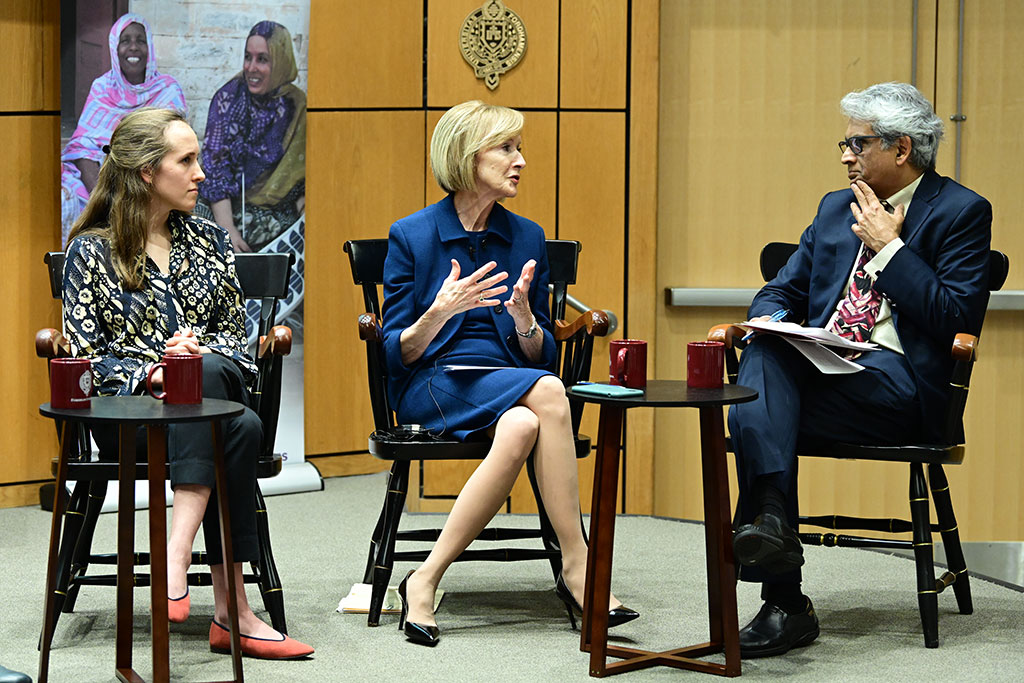
Teaching About Events Leading to the Holocaust
Teter said that discussions with her students have convinced her that it might be better to place more emphasis than in the past on the lead-up to the events of the Holocaust. It’s something she does already and feels strongly about its value.
“That is what makes it relevant because they can see the processes, they can see the mental frameworks, they can see the media environment, the propaganda work that resonates with them, and the world that they are living in,” she said.
“It doesn’t just spring up in 1933. This is an outcome of a longer process. We need to recalibrate that story to include that longer story too.”
Unreliable News Sources with a Platform
Complicating the effort to recalibrate the way that the Holocaust is taught is the fact that those who would muddy the waters with obfuscation and ambiguity have access to more communications tools than in the past. Woodruff said journalists at NewsHour have had to come up with a new construct over the last several years to cope with the shattering of the traditional news delivery model.
“How do you both cover the news, be fair, cover it all, and call out something that is not the truth, that is a lie? I will tell you flat out, I’ve had difficulty with that,” she said, because she believes you cannot call someone a liar unless you know what’s in their heart and mind, an admittedly tricky endeavor.
She and her colleagues have adjusted by explicitly labeling false information as such. But given the plethora of news sources available online now, more responsibility has fallen on us as individual consumers.
“There’s a much larger burden placed on news consumers to figure out, ‘Can I trust this, can I believe this? How do I know?’ she said.
“We’re living in a much more complex, complicated moment when it comes to understanding what to believe.”
The event, which was livestreamed, can be viewed in its entirety below.

